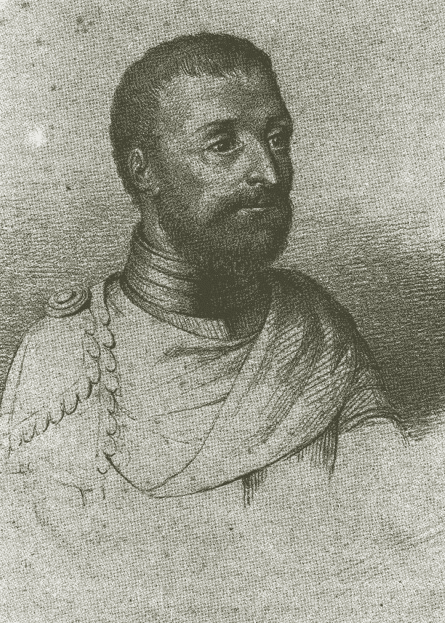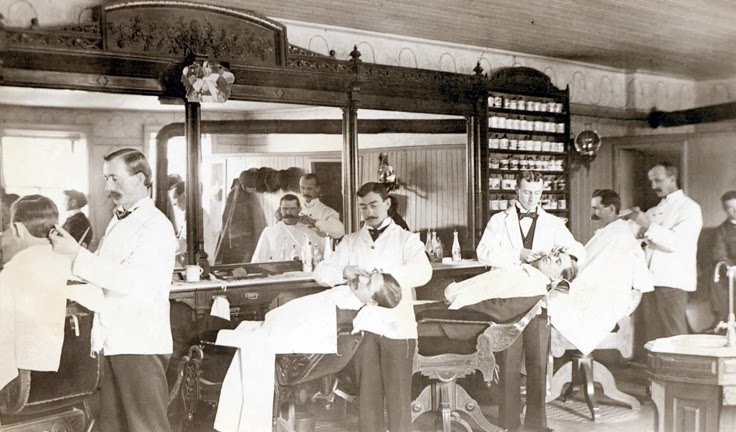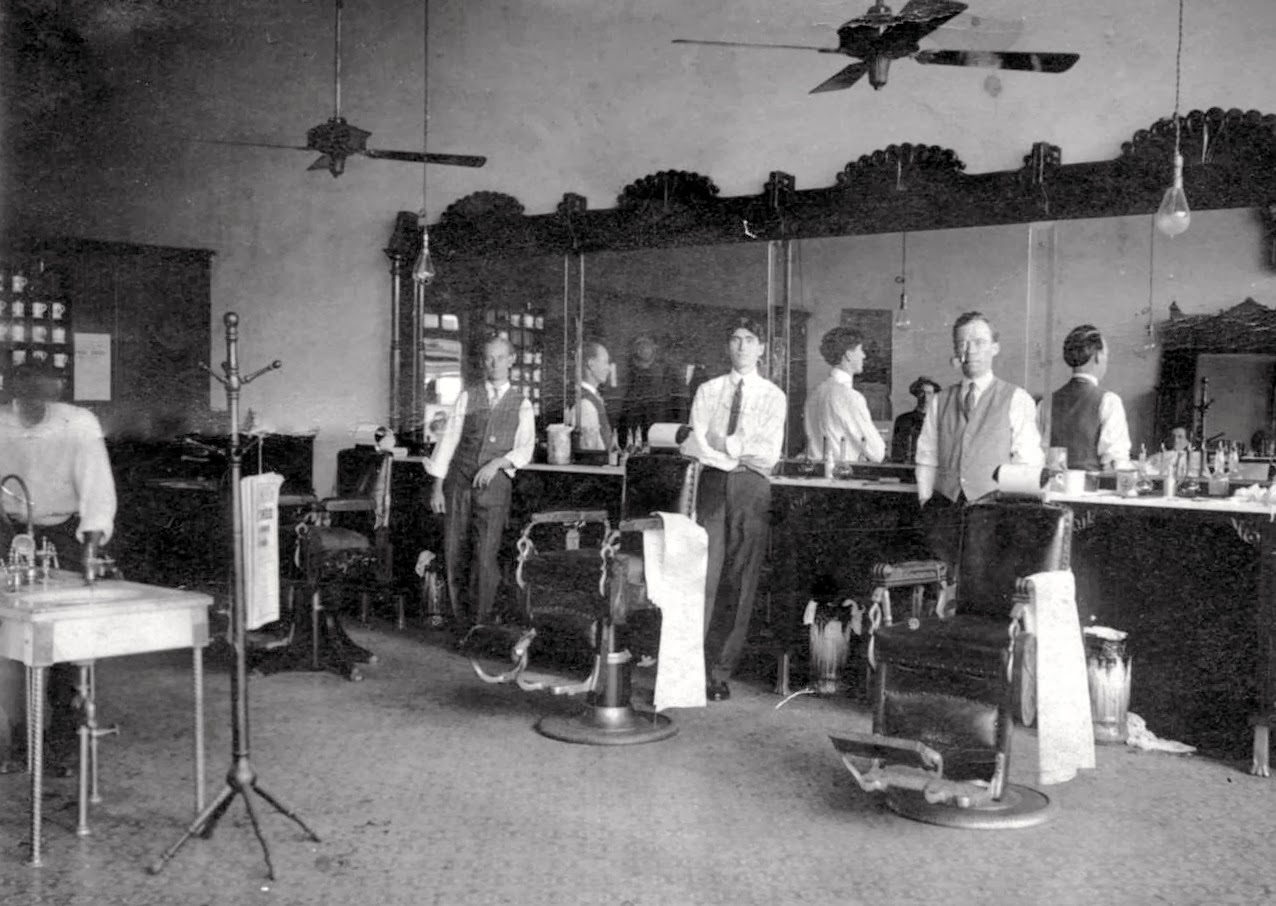 |
| Cal y Fornos |
CALIFORNIA--
 When you think of the name California, you might think of the Gold Rush, the West, Frontier days, Cowboys and Indians (now, Native Americans), the Spanish Conquistadors, Missions and the Pacific coastline. What many people don't often think about is why or how California got it's name. Well, as I stated above, the forum I was on, there was a gentleman who was adamant about stating that California was named after a Black Queen of the Amazons, Calafia. There have been many scholars who have agreed with this theory, although the origins of Calafia and her island of Amazons are still up for debate. To understand this story, one must go back, all the way back as far as possible to the first references of any possible link to this story, this person (fictional or not) and the place known as California.
When you think of the name California, you might think of the Gold Rush, the West, Frontier days, Cowboys and Indians (now, Native Americans), the Spanish Conquistadors, Missions and the Pacific coastline. What many people don't often think about is why or how California got it's name. Well, as I stated above, the forum I was on, there was a gentleman who was adamant about stating that California was named after a Black Queen of the Amazons, Calafia. There have been many scholars who have agreed with this theory, although the origins of Calafia and her island of Amazons are still up for debate. To understand this story, one must go back, all the way back as far as possible to the first references of any possible link to this story, this person (fictional or not) and the place known as California.This story takes twists and turns, can be perplexing at times and will definitely make you think. When you are done reading this, I hope you would have learned something new and will come to your own conclusions as to the true origin of California's name.
CALAFIA (Amazon Queen)--
First mentioned in a romance novel (yes, fiction) in the early 16th Century, " Las sergas de Esplandián," written by Garci Rodríguez de Montalvo, Calafia is mentioned as a leader and queen of an island inhabited ONLY by black (Amazon) women. In a nutshell, in this fictional story, this place known as "California" is also an island full of griffin's (remember this fact for later). Queen Calafia decides to travel with Radiaro, Sultan of Liqua (Muslim) all the way to Constantinople to aid in the Muslim fight against the Christians. She also brings with her, an army of trained griffins to destroy and eat her enemies. In the story, she later converts to Christianity and even marries a Knight and returns to her land, where she allows men to dwell as well as women.
AMADIS de GUALA--
There were earlier books that Montalvo used as inspiration for his book, although they do not mention Calafia. The original works, which were comprised of four books, known as "Amadis de Gaula" were written in the early 14th Century and later published by Montalvo in the 16th Century. The stories are a precursor to Montalvo's addition (5th book) "Las sergas de Esplandián," and speak of the earlier times in the life of the Knight Esplandian. Although Montalvo published these works, he was not the author of the first three books, and it has been cited that the style of the writer changed drastically by the fourth and fifth books, showing Montalvo's more inferior writing style.
According to records, it has been up for speculation as far as who the original author was. Although the places and people in the "Amadis" book seem fictional, it is highly likely that it was actually based on the story of Henry of Castile and his blocked marriage to Constanza de Aragon. Many of the places and events mentioned in the first three books, although fictionalized by name, sound quite similar to real places in or around Europe.
Although it has been said the author was either Vasco de Lobeira or even Joao de Lobeira, there has been some findings that may prove that Henry of Castile wrote the first three books himself. According to "O Romance de Amadis", by Alonso Lopes Vieira, Henry of Castile actually handed the manuscript of "Amadis" to King Diniz of Portugal around 1295, and also the account of the visit of Henry of Castile in Portugal to his nephew, the King, is recorded as well.
It is obvious from researching this compilation of stories, that Montalvo did not write the first three books and although he claims to have found the fourth and fifth books in a trunk in Constantinople, the odds are that he just fabricated additional works to keep the "romance" of these epic stories alive. It is also interesting to mention that the book, "Don Quixote" mentions both the "Amadis de Guala" and the "Las sergas de Esplandián" books, and suggests that Montalvo's work is shotty, thus the character throws the latter copy away and keeps "Amadis."
So what does that have to do with California? Well, we will get to that. So for now, you know where the story of Calafia came from, and that the author was the type to draw on others works for his inspiration and ideas. Remember this as we go further into the topic.
GRIFFINS--
What does a griffin have to do with this story? Well, everything actually. If you recall that Montalvo's story about Calafia inhabiting an island of women that had trained griffins. According to the story, this place was a "Paradise" of sorts and the only place the griffins would dwell. If you do any research into the origins of the griffin, although you will find it in ancient greek folklore, the real origins stem from Persia. In fact the word "Kar-i-farn" is a mythological "mountain of paradise" where griffins dwelled. Thus the origins of the griffin are middle eastern and this island of griffins depicted in Montalvo's book are inspired by Persian influence.
"La Chanson de Roland" (written around 1140-1170), the oldest standing piece of French literature and is revered as one of the most epic poems of all time mentions something worth looking into regarding this topic. (I particularly love this piece of literary art, due to the fact it mentions my direct ancestor, Charlemagne, the Father of Europe).
In the poem, there is a stanza that lists various nations or lands. Depending on the translation you read it basically states:
"Dead is my nephew who conquered so many lands! And now the Saxons rebel against me, and the Hungarians, Bulgarians, and many others, the Romans, the 'Puillian,' and those of Palermo (Sicily) and those of Africa, and those of 'Califerne'."--
There you have it, the very first mention of the land known as Califerne is noted in this epic poem. And it has been mentioned that the name Califerne and the Persian word "Kar-i-farn" are too closely related to go unnoticed or unmentioned. The lands mentioned in this stanza are separated by commas showing that they are all each individual lands. Some people have tried to attach Califerne to a land in Africa, but given the fact many learned scholars who have tried to figure out where this "Califerne" was located, the thought was that it may have meant "caliph's domain." (Caliph, meaning "Leader, Ruler"; Muslim)
This showed that more than likely the land was towards the middle east, corroborating the "Kar-i-farn" theory. Also, if it was a land in Africa, why would it be repeated? Why would the names be separated by commas? It wouldn't be. Just as Rome and Palermo were separated by commas, and Hungary and Bulgaria were separated, thus was Africa and Califerne.
So we now know where the land of the griffins was supposed to be, which corroborates with the Persian idealogy of "Kar-i-farn," and the epic poem "La Chanson de Roland," speaking of Califerne which more than likely was located in the middle east. This information does show that more than likely Montalvo was influence by the Persian word "Kari-i-farn" for his mythological "California", the paradise where the griffins dwell.
 |
Amazon preparing for the battle |
AMAZONS--
The word Amazon, although it sounds like something that one would expect to hear in South America (ex; the Amazon river) is actually Greek. It depicts a nation of women warriors, and even some stories in Greek mythology speak of demi-gods being as Amazon warriors who lived off the coast of the Black Sea in what would be geographically near or in present day Turkey. The name itself does not depict a woman of color, or native people of indigenous lands being that the Amazon origin itself came from Greece. It wasn't until later, after the romantic tales of exploring new lands, discovering riches or even becoming a hero like the epic chivalrous tales many had been accustomed to reading, that the idea of these new lands or islands of "terrestrial paradise" may have manifested themselves.
In 1498, the time Columbus was sailing off the coast of Venezuela, even he reported that he believed he was about to find a "terrestrial paradise." In fact the reports from Columbus himself more than likely inspired Montalvo's writings in his 5th book "Las sergas de Esplandián" when conjuring up his mythological "California".
Antonio Pigafetta's account, while travelling with Maggelan in their voyage around the world may very well be the very first account of a island inhabited by women, although this location took place in the East Indies (Malay Archipelago) and the women were not black, but instead islanders found near the Gulf of Tonkin in Indochina:
 |
| Antonio Pigafetta |
[154] “Our old pilot related to us other extravagant things.
He told us that the young men of Java .... and that in an island called
Ocoloro, below Java Major, there are only women who become pregnant with the
wind, and when they bring it forth, if the child is a male, they kill it, and
if a female, they bring it up; and if any man visits their island, whenever
they are able to kill him, they do so.”----A.Pigafetta's account.
What is interesting is that Cortes mentions a very similar myth or story as well,
"He likewise brought me an account of the chiefs of the province of Ceguatan, who affirm that there is an island inhabited only by women without any men, and that, at given times, men from the mainland visit them; if they conceive, they keep the female children to which they give birth, but the males they throw away. This island is ten days' journey from the province, and many of them went thither and saw it, and told me also that it is very rich in pearls and gold. I shall strive to ascertain the truth, and, when I am able to do so, I shall make a full account to Your Majesty."........(Fourth Letter, Cortes to the King of Spain, October 15, 1524).
And again, six years later another such story (or myth) is brought up in an account, this time by Cortes' enemy Nuño de Guzmán. However, in Guzman's depiction the women are white.
"From thence [Aztatlan] ten days further I shall go to find the Amazons, which some say dwell in the Sea, some in an arme of Sea,and that they are rich, and accounted of the people for Goddesses, and whiter than other women. They use bowes, arrows, and targets; have many and great townes; at a certain time [they] admit them [i.e. men] to accompany them, which bring up the males as these the female issue."-
From the looks of it, all the romantic notions of exploring and conquering lands, finding treasures and exotic or beautiful "goddess-like" women influenced many of these explorers to fantasize about what they would find in their journeys. Alot of their ideas could have stemmed from the heroic stories in Greek or Roman mythology, or even father back in Sumerian, Egyptian or Mesopotamian folklore. Even in the case of "La Chanson de Roland," the story of chivalry, honor and heroism was something that had been handed down for centuries. In the case of Montalvo's story, he created his own idea of a fantasy place known as "California" that wasn't in the mythological folklore of any culture, and was just a fictional story, period.
Do I think that California was named after this fictional place written in a romance novel a mere 500 years ago? No, I do not.
Cortes never mentioned that name whatsoever in his letters. In fact, Cortes didn't pick the name California at all. In fact, Cortes sought to name Baja and the Bay of La Paz, "Santa Cruz". The first mention of the name California was more than likely by Fortun Ximenez (or Jimenez), although there is no way to know if or why he chose the name because he failed to save records of that voyage.
In fact, the mention of California in later records does not explain the reason for choosing the name at all. Although the diary of Juan Rodriguez Cabrillo mentions California casually, some maps of the land showing Cortes' journeys dated back to 1541 didn't have the name California added to it until the late eighteenth century by Archbishop Lorenzana.
Diaries of some of the men on the Ulloa expedition do not mention the name California at all while Francisco Ulloa's journal itself does. It has also been thought the name California may have been added later to some journals or documents after the name had become established and more widely known. As much as California was noted in record, so was the name Santa Cruz or Santa X.
Bottom line is that there was no definitive records that state why they chose the name at all. The idea that California is named after this fictional story by Montalvo, about an island of griffins, amazon women and Queen Calafia just cannot be verified, therefore it cannot be stated as fact.
Juan Rodriguez Cabrillo, mentioned above, was Portuguese although he was sailing under the Spanish flag. He could have very easily came up with the idea for the the name, especially since his diary has some of the earliest mentions of the name. In his home country there is a beach that was named "Praia da California", as well as a river "Ribiera da California," bearing the same name. The beach was named California several hundreds of years ago, after there were ancient Roman lime kilns found along the beach which the Portuguese called Forno da Cal. Again, these two locations which are located in Portugal predate the discovery of our California (U.S.) which makes a lot more sense than some silly theory about a fictional novel that more than likely none of these men had ever read. These men were do'ers, they were explorers and yes, at times conquerors. I highly doubt they spent much of their off time sitting around reading romance novels. Really....you have to use logic here.
OTHER THEORIES--
There was another theory that given the climate of Baja when the explorers arrived, the area was more than likely a hot, barren land. Thus the theory that California was named based on the Latin words “CALIDA FORNAX” (hot furnace) makes more sense. This also correlates with the theory above.
Once again, upon even further research, I found another mention of “CAL Y FORNOS,” meaning "Lime and Furnace", or (Lime-Kiln). According to the December 22, 1895, Los Angeles Herald, the article ponders the very same theories I have presented to you today and even ends the article with the same conclusion that the name stemmed from "Cal y Fornos" explaining that the very natives of made lime kilns for their pueblos. That is an interesting thought, that different peoples, from ancient Romans in Portugal to Native Americans here on our Pacific Coast would use similar types of lime kilns along the beaches.
After thoroughly studying this subject I have come to the more logical theory, being that the Spanish usually, for the most part, named places after something, (ex; La Mesa, La Paz, El Cajon, etc.) that California's origin is based on the Cal y Forno or Forno da Cal, just as it was in Portugual.
In conclusion, you can agree or disagree with the information I have presented to you. The facts remain that there is no definitive records claiming that the name California was given to this state based on a black woman in a fictional romance novel. Go back to the documented sources, not assumptions or conjecture. However, there are facts and physical locations that predate our beloved state, having used the same name, and we do know how and why they were named.
Was it named after a fictional land in some romance novel? Or was it named after the abundant lime deposits in the rocks used to create furnaces that the natives used as stoves,when the explorers landed here? You will have to use logic, not emotion to decide this one.
(Copyright 2014- J'aime Rubio, Dreaming Casually Publications)
Some Sources: "The First Voyage Around The World"- A. Pigafetta
"A History Of California, The Spanish Period"- Charles Edward Chapman
"La Chanson de Roland"- (various translations)
"Letters of Cortes"-
"Las sergas de Esplandián"
"Amadis de Guala"
Los Angeles Herald, December 22, 1895
(many various other sources....)







+Tristan+and+Isolde.jpg)





